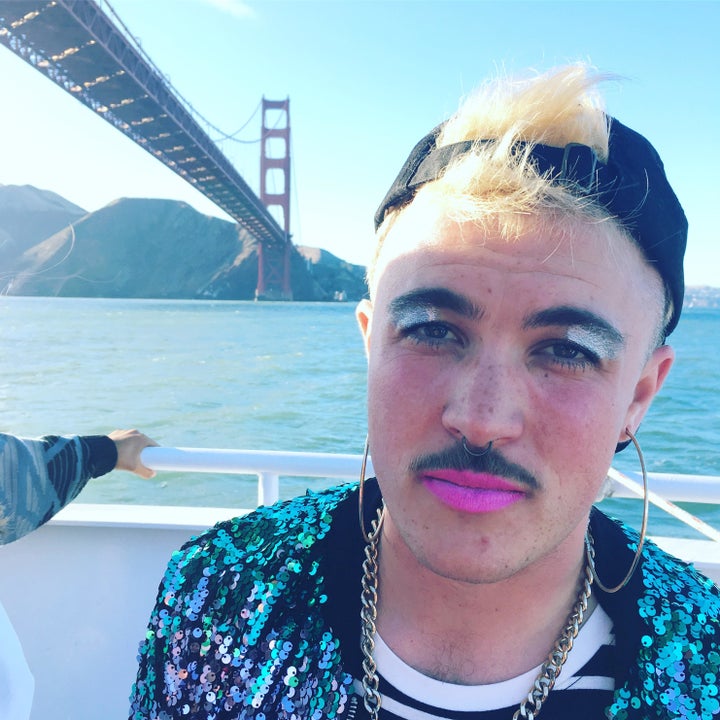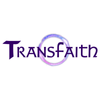
When I tell people I studied religion, they look confused. As a white queer and non-binary trans person whose relationship with the church could be boiled down to a series of after dark make-outs on the dusty steeple steps, my attraction to religious studies was unexpected. I wasn’t raised religious; my trans friends who were have perpetually complex ties to their religious families or communities. And it’s true, I’m not interested in organized religion. Religions with traceable histories, or places of prayer with known boundaries such as churches, temples and mosques aren’t where the majority of trans people are making meaning.
New religious movements are happening in the queer and trans community on sweaty, grimy dance floors under the hypnotic pulse of a Juliana Huxtable set. Trans people are creating meaning through artistic and cultural practices of performance art, nail art, dj-ing, poetry, dance parties, hip-hop, stand-up comedy, pop culture gossip circles and fierce community activism. As we move forward, the definition of religion is loosening and trans people are creating their own meaning-making movements outside of traditional religious spaces.
“When so many of our blood families refuse to see us, we can look to the clusters that the stars created to learn more about our own history, trauma, and healing.”
Queer and trans people who were raised religious often have complicated relationships with institutional religious. Whether that stems from the values of our blood families, internalized guilt, or social pressure, religion is often a touchy subject that stirs up a lot of emotions. However, concepts of ritual, worship, energy, intuition, and tradition show up frequently in our community. These words invoke the power of religion while seemingly standing a few steps back from any oppressive structures it. Trans people are relying on cultural and artistic mediums to create a language, a textbook, and a movement through which we can survive.
If you’ve ever heard Shea Diamond’s song “I Am Her,” then you know what I’m talking about. The entire song is a cathedral. While incarcerated, she wrote this anthem for trans women of color. In her artist bio she writes, “I began writing ‘I Am Her’ as a statement to a world that said I shouldn’t exist. I wrote it for all those that felt shunned for simply being who they were.” The video is a lucid testimony to the strength and resilience of trans and gender-nonconforming women of color. The black-and-white video footage shows Diamond cutting through the sea of staring eyes with her powerful voice singing, “There’s an outcast in everybody’s life/ And I am her.” The video portrays the alienating experiences trans women of color face when navigating public spaces such as the train, city streets and tunnels. “I Am Her” packs the raw power of a Southern sermon and documents the places where trans women (of color) go to fight, heal and survive: the nail salon, Black Lives Matter protests, and steamy dance parties.
How come you can’t have a conversations with a trans person for five seconds in the Bay Area without hearing those fatal four words: “What is your sign?” Astrology is a thousand years old and although now in white queer spaces it’s slowly becoming the white-washed witchy counterpart to tarot, the significance of astrology for many queer and trans people is undeniable. Astrology transcends space and time. The stars tell a story that reaches far back beyond the present moment and stretches deep into the future — towards a universe beyond an inadequate world full of transphobia.
Astrology also helps connect us to other people through an intricate web of planets, signs, houses, and conjunctions. Chosen family is a blessing, but there is also a burden that comes with choosing. When so many of our blood families refuse to see us, to mirror us, to help us feel cohesive, we can look to the clusters that the stars created to learn more about our own history, trauma, and healing. Astrology can help us feel as if our existence isn’t an accident or a fluke in the system (or should I say cistem).
When trans people step onto a stage for a burlesque night and choose to reveal, shake, and take ownership over their own stories, that is a gift. When trans folks choose to be sexual with other trans people and actively worship trans bodies, that is survival. When trans communities create altars adorned with crystals, dried flowers and disposable photos both to honor all of the trans women of color we have lost and to pledge to all those still with us that we will fight for you, that is religious.

Mud Howard is a white, non-binary trans poet who believes in the healing power of the selfie. Mud writes creative non-fiction, lyrical essays and really good international love letters. They write about witches and ghouls, the inadequacy of the binary, covert toxic masculinity in the queer community and the big blue ocean. You can find their work in THEM literary journal, The Lifted Brow, Black Napkin Press, and Cleaver Magazine. Mud is so excited to collaborate with Transfaith for this monumental fellowship.
